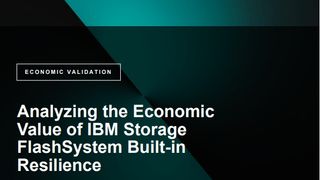Are you ready for PCI compliance?
Davey Winder takes a closer look at the financial transaction security standard and what you need to do to get certified.
"As such your merchant services organisation has typically stipulated in its merchant service contract that you should be in compliance with applicable scheme compliance programs which includes PCI DSS. PCI DSS is being codified into State Law in the US since 2007 and will likely be codified into Federal law within two years. At that stage the EU is very likely to follow suit so the advice is to get ready now".
At the end of the day, this is not a matter where business can afford to be choosy; not that it has a choice as compliance is mandatory anyway. Far better to get with the program and become compliant than risk either having the credit card company remove your privileges as it were, fine you for non-compliance or, worse case scenario, suffer a high profile data breach that irrevocably damages your reputation, brand and ability to remain competitive.
Even when budgets are being squeezed, PCI compliance is not an area where you can afford to cut corners.
Businesses should think of it as a marketing opportunity, a chance to show their customers and business partners alike that they take security seriously.
As Dr Graham Oakes, author of a book entitled 'Project Reviews, Assurance and Governance' rather succinctly told IT PRO when asked what companies that are not yet PCI compliant need to do: "If they're not seriously on the way to compliance now, then the main thing they need to do immediately is prepare a good excuse..."
The 12 core requirements of PCI-DSS compliance
According to the PCI Security Standards Council, the 12 core compliance requirements are:
Get the ITPro. daily newsletter
Receive our latest news, industry updates, featured resources and more. Sign up today to receive our FREE report on AI cyber crime & security - newly updated for 2024.
Build and maintain a secure network
Requirement 1: Install and maintain a firewall configuration to protect cardholder data
Requirement 2: Do not use vendor-supplied defaults for system passwords and other security parameters
Protect cardholder data
Requirement 3: Protect stored cardholder data
Requirement 4: Encrypt transmission of cardholder data across open, public networks
Maintain a vulnerability management programme
Requirement 5: Use and regularly update anti-virus software
Requirement 6: Develop and maintain secure systems and applications
Implement strong access control measures
Requirement 7: Restrict access to cardholder data by business need-to-know
Requirement 8: Assign a unique ID to each person with computer access
Requirement 9: Restrict physical access to cardholder data
Regularly monitor and test networks
Requirement 10: Track and monitor all access to network resources and cardholder data
Requirement 11: Regularly test security systems and processes
Maintain an information security policy
Requirement 12: Maintain a policy that addresses information security
Davey is a three-decade veteran technology journalist specialising in cybersecurity and privacy matters and has been a Contributing Editor at PC Pro magazine since the first issue was published in 1994. He's also a Senior Contributor at Forbes, and co-founder of the Forbes Straight Talking Cyber video project that won the ‘Most Educational Content’ category at the 2021 European Cybersecurity Blogger Awards.
Davey has also picked up many other awards over the years, including the Security Serious ‘Cyber Writer of the Year’ title in 2020. As well as being the only three-time winner of the BT Security Journalist of the Year award (2006, 2008, 2010) Davey was also named BT Technology Journalist of the Year in 1996 for a forward-looking feature in PC Pro Magazine called ‘Threats to the Internet.’ In 2011 he was honoured with the Enigma Award for a lifetime contribution to IT security journalism which, thankfully, didn’t end his ongoing contributions - or his life for that matter.
You can follow Davey on Twitter @happygeek, or email him at davey@happygeek.com.





